Spyke Games puzzle title Tile Busters, which was released in 2022, features similar core mechanics to the likes of CoinMaster while also trying to implement other mechanics successfully showcased in titles such as Monopoly GO! with the ability to construct and fix up locations as you progress.
This blend of 'tried and tested', plus the game's personal style, saw Tile Busters have a successful 2023, gaining a steady increase in downloads and eventually surpassing 340,000 downloads shortly after the first half of the year.
Now Irina Kurskaya, game designer at Belka Games, shares a deep analysis of the title, breaking down its gameplay, approach to monetisation and what traits it was able to successfully borrow from other titles while also setting itself apart from the competition.
Tile games wow players with their appealing graphics and meditative gameplay. Meta takes a backseat while the core takes centre stage. However, Spyke Games' Tile Busters added something new to the genre: the thrill of chance. The meta-gameplay still fades into the background, but Tile Busters' approach to liveops and monetisation is definitely worth delving into.
Without a doubt, there are more profitable and well-known games in the tiles genre, but it was Tile Busters' relentless rise in revenue that caught our eye. This, despite the fact that the number of installs is decreasing in comparison to August's figures.
Revenue:
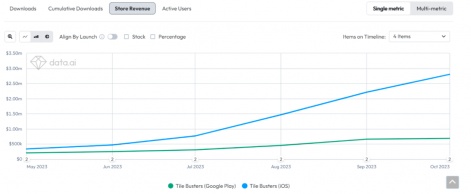
Installs:

So, what is it about the game that hooks players and game designers alike?
Firstly, the creators attached a full-fledged meta-gameplay to the game's core tile mechanics, which are similar in many ways to a social casino. The team aims to synthesise these two genres into unique gameplay by taking the best from both.
And secondly, all the events in this game are dialled up to the maximum. If there's a strike, then it features 100+ levels, and even customisation is heavily monetised.
So Spyke Games placed their bets, but how well did they pay off?
Let's take a look at the graphics and features of the first playing session, and then we'll dive into what makes the game stand out and how effectively it does so.
Metrics
The game's peak was reached in September 2023 when Tile Busters made it into data.ai's list of the Top 50 Grossing Titles in the US on iOS. The download dynamics have little impact on the grossing dynamics. This means the creators are likely optimising their traffic purchases to extract more profit from a smaller player base. If that's the case, then it's working. Currently, their positions have slightly weakened amid the overall competition for Christmas traffic, but I'm confident they'll quickly rise again.
The first version of the game was launched on September 20, 2022. By April 2023, the game had slowly climbed up to 100,000 downloads per month, and in the July-August period, it passed the mark of 340,000 downloads per month.
The downloads show us that the project started actively buying users, even though there were no radical changes within that period. The creators put their all into the quality of their product and decided to share it with the world.
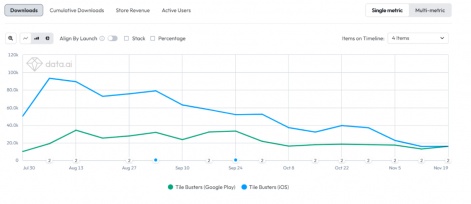

And they were right; revenue was predictably growing in proportion to the number of purchases. Players are ready to pay for what Tile Busters has to offer them.
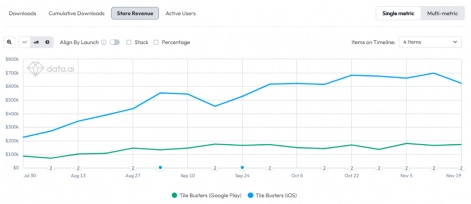
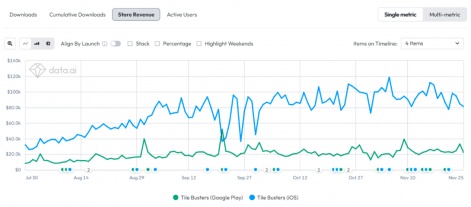
At the end of November, this game held 162nd place on the USA's overall downloads ranking and 111th for income.
Demographics
The gender breakdown is par for the course for a casual game: the audience is chiefly female. However, this gender bias is higher than that of reference games in terms of core and meta.
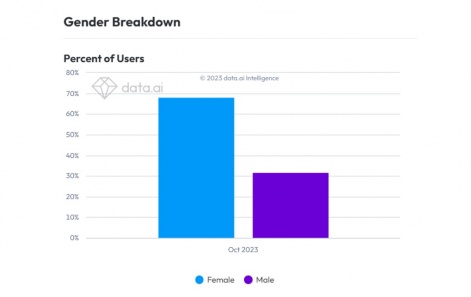
For instance, Triple Tile has similar core mechanics, as does Coin Master, from which the meta gameplay was borrowed. The division is almost the exact same (with a greater bias towards equilibrium). Interestingly, though, there's nothing particularly feminine in Tile Busters' theme or setting compared with its competitors.
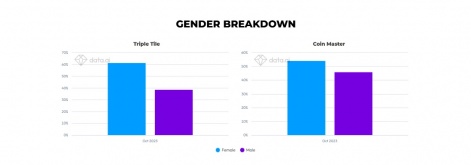
Regarding age, the project emphasises the 35+ audience, which is more or less the same as its competitors.

Triple Tile (left) relies more on the 45+ crowd (<50%), while Coin Master's indicators are similar.
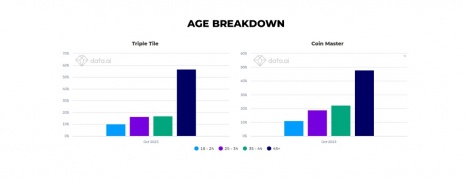
Core & meta
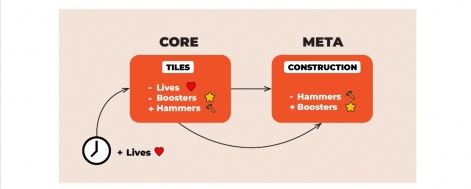
It's a simple cycle: the creators got inspired by Coin Master's meta and layered it with the core gameplay of the tile genre.
The meta is similar to the one also used actively and successfully by Monopoly GO!. Players are rewarded for beating core levels with hammers, which are used as currency for constructing buildings at their current location. Every location has five fixed places to build. Each one has three upgrades (advanced stages may contain more upgrades). The upgrade price gradually increases as you progress through the locations.
After completing construction in one location, players move on to the next one. Moving on to the next stage gives players leaderboard points and a sense of progress and keeps them engaged with a change of scenery.
This meta-twist will come as no surprise to any fan of casual games, but it feels innovative for fans of the genre. This is because the meta for tile games consists of a simple chain of levels. At most, the level selectors' backgrounds might change in appearance. Meanwhile, Tile Busters gives players cosy little houses which can be upgraded by completing levels. It offers movement, dynamics, and anticipation. We don't know what each construction phase will look like, but we know for sure that it will be cooler than the previous one.
And let's not forget about its sense of humour! Each location goes all-out in featuring funny and easy-to-catch references. If the setting is England, we get tea, palace guards, and red phone booths, or if it's San Francisco, we see a hipster toting coffee on a hoverboard, and Thailand gets elephants and tuk-tuks. These are important elements regarding how much enjoyment players get from the game.
Tile Busters shows us that the tiles genre has been missing out on meta for quite some time. And it doesn't need to be anything complicated. In fact, the opposite is true; its simple story goes hand-in-hand with the meditative core gameplay.
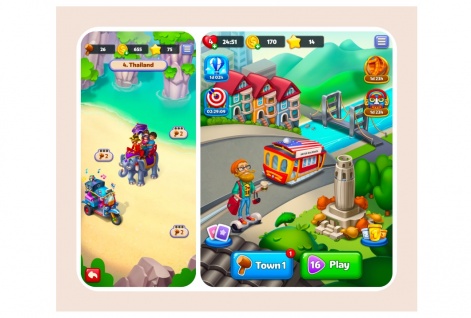
Judging by the choice of meta, the creators wanted to incorporate the features of another genre into their project (Monopoly Go! being the first title that comes to mind) while maintaining the core tile game mechanics. This allowed them to stand out from the crowd of tile games. As the CEO of Spyke Games put it in a podcast for Deconstruction of Fun, a successful game needs to "bring something amazing to the table." You can see that the company maintains this principle in practice, too.
Fans of the tiles genre appreciate its simplicity, the ability to play at your own pace, low phone resource usage, and the vibrantly coloured tiles. However, Tile Busters' success shows that placing a strong emphasis on meta doesn't do any harm to the genre. On the contrary, it adds a sense of drive.
Monetisation in Tile Busters, aside from a couple of nuances (we'll get to those later), offers the classics: a bank and a rotation of offers. A real gentleman's assortment. There's a three-slot offer, a chain offer with free slots, a starter offer, and many others.
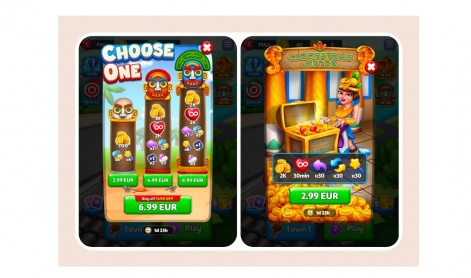
First impressions
Immediately after the title screen, the game plunges the player straight into the core, which is considered to be good form these days. However, the creators took more care in approaching the tutorial, teaching players how to bust tiles not with bright pictures but with dice faces. After the first levels, we're given tiles with colourful dots, and only then do we see bright pictures.
At first glance, this seems like a risky decision. After all, vibrant illustrations are one of the genre's main pulls. On the flip side, it provides a surprisingly soft and pleasant introduction to the core. I'd venture to assume that the creators did their homework on analysing the launch funnel and found that simplicity and clarity are more important at this stage than fun pictures. What's more, the transition from black and white dots to images on tiles takes place in a matter of levels, and the bright graphics of the title screen make it clear that a colourful adventure awaits the player, which is worth sitting through a couple of levels of training.
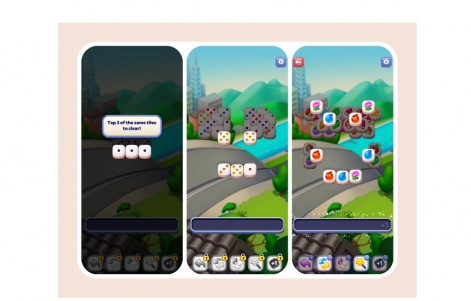
Naturally, the first thing that caught my eye when progressing to the meta-gameplay was the visual style. The game wastes no time showing the player a bright picture brimming with items and characters.
At first, the stylisation seems unpolished to the point of sloppiness. But only for a second. All the characters feature a consistent style, and they often flash up in dialogues and on the title screen, so any mistakes would be visible right away. The art, just like the animation, is top-notch. The UI and art work together, complementing each other and creating a harmonised atmosphere. Looking at everything together, it's clear that the creators deliberately chose this style to stand out from the competition.
Lily's Garden and Penny & Flow did the same thing back in their time. The characters in Lily's Garden are drawn with sharper shadows and facial expressions. Unlike the cosy world of Gardenscapes, this is a dynamic sitcom where each character is dialled up to the max (and this style is a perfect fit for their creatives and edgy narrative). The game is alive and well, making money and evolving, which means that there's a demand.
See an example of a character from Lily's Garden and Cleopatra from a Tiles Busters offer. Both examples are a little caricatured, but they're certainly eye-catching.

The tiles feature vibrant colours and rounded shapes that are classics of this type of game. This makes sense: the player spends most of their time interacting with the core, so it's best not to experiment with it.

As far as this game is concerned, it's never too early to push monetisation. Personally, I didn't need to buy anything during my first couple of sessions. I had enough currency and tricks to complete levels. But what if someone did need to? The creators saw no need to wait for players to swing by the bank themselves; instead, they gave players the offer pack in their first play session. The offers are time-limited, naturally.
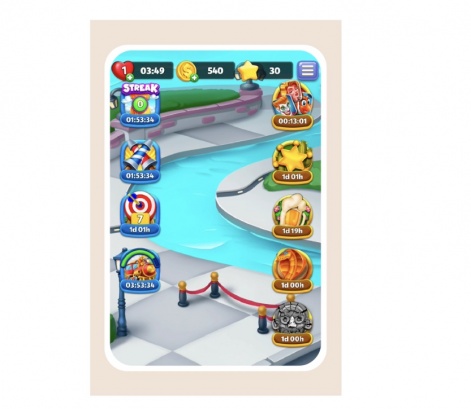
Tile Busters' features
As many game designers are aware, strike mechanics are a great motivation for players to donate money within levels. After all, the longer the strike, the bigger the bonus.
The Tile Busters team approached this subject with a bang. Compared with the ten tiers in a similar event by Royal Match (down from 20 last year), Tile Busters prepared an incredible 120 tiers. In previous versions of the event, there were 50 of them, but after a reskin, the developers decided to go all-out.
The levels in Tile Busters seem simple, especially at the start. But don't be fooled, or your panel will soon fill up with tiles, and it'll be game over. I found myself in that exact situation dozens of times. The core gameplay is very meditative, which makes it easy to switch off your brain and mess up. To keep your strike up to 120, you need to make heavy use of tricks, pay coins to extend the level, watch ads, or all of these at once. Reaching the top gets so stressful that the final rewards might not look especially generous. But they're given out for every fifth level per tier. Not bad.
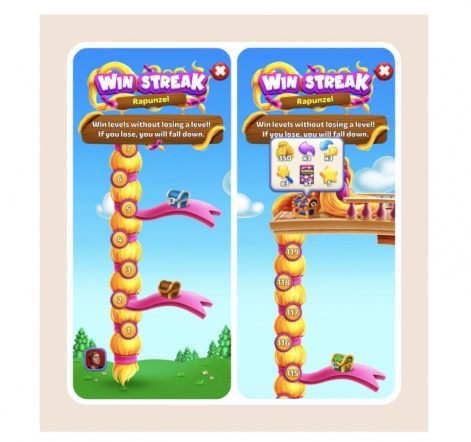
Instant duel
Two players bust tiles at speed, and whoever clears the field first wins. Taking part in a duel costs players 50 coins. The winning prize is 100 coins, as well as leaderboard tokens. Losers part with their bet and a mere one token.
The tokens are subject to strike mechanics: the more victories you win, the more tokens you get, while the penalty for losing remains the same: 1 token. For a strike of 5 or higher, victory gets you ten times more tokens than without any strike. This lets players race up the leaderboard, leaving a shower of coins behind them.
Here's how it's done. The first three or four duels go by easily enough. After that, you get caught off-guard when you're faced with a formidable player. Your hard-earned strike is at stake, and in order not to lose it, you have no choice but to spend coins or watch an ad. The next time, you watch your opponent more closely and don't hesitate to spend your tricks. All of your tricks get used up and your coins trickle away. Bam!
Such features are normally used in PvP match3 games. A strong example of this is Match Masters. Generally, players face off simultaneously on one field. Tile Busters, however, splits the field in two and gives each player an identical set of tiles. It feels to me like the opponents are bots, but I can't say for sure.
From a player's perspective, this feature is simple. It's easy to ease into, and you quickly find yourself addicted, wanting to play even to the detriment of your core gameplay.
From a game designer's point of view, this feature is an excellent subject for deconstruction. It's just as complex as it is meticulous, and the accents are placed with devilish precision. When you're in it to win it, the sky's the limit!
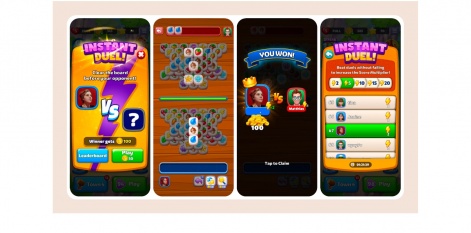
Customisation for your money
Here, even customisation is a chance to squeeze players for their savings. Tile Busters includes features of PvP games, such as Instant Duel as well as global and local leaderboards. And seeing how your avatar is hung up in pride of place, gloating down on your opponents, you find yourself wanting to customise it.
Normally, casual games give you a choice between a couple of dozen base avatars, and seasonal ones are added as rewards. But Tile Busters went further, selling them in packs of 10 with a hefty price tag (2500-3000 coins). If you didn't manage to save up enough coins, then welcome to the bank. The cost of avatar packs ranges from 11 to 25 euros. Sure, it's cheaper to buy coins and use them to purchase avatars, but the degree of monetisation is still astounding. It would be very interesting to find out how effective this approach can be.

Sometimes, an offer pops up with a discount on one of three randomly themed packs. It's cheaper than the bank and easier than dealing with coins. The offer is time-limited and only pops up once, or it did for me, at least.
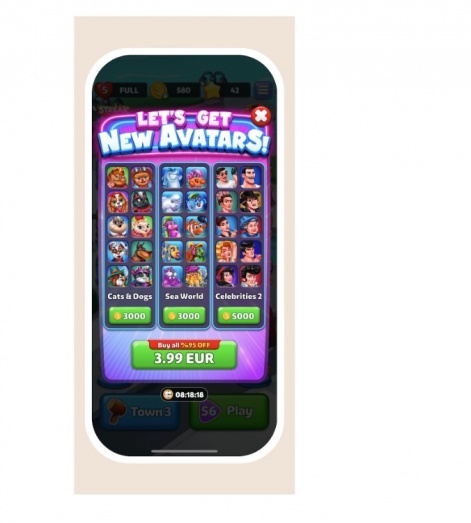
Final thoughts
Tile Busters is an example of a game whose creators really did their homework. They researched the market and handpicked only winning strategies in race tournaments against other players, duels with tokens at stake, and one-shot levels. In the above analysis, we only covered some of the features because we wanted to focus on the particular quirks seen in Tile Busters, but you get the idea.
The long strike event really expands our understanding of the level of commitment (and solvency) of the player base. The game's synchronised PvP feature is just as attractive to players as the core gameplay, with the added perk of being a great currency sink, which is a big plus for monetisation. And selling avatars on such a grand scale is rarely found in casual games.
This game is certainly one to keep an eye on in terms of which features will justify the creativity of this approach and which will fall by the wayside. Will unique tile packs be sold for proud display in duels? Just how long can strikes get? One thing's for sure: the developers' risk paid off. Tile Busters is definitely worth watching.
Edited by Paige Cook






















